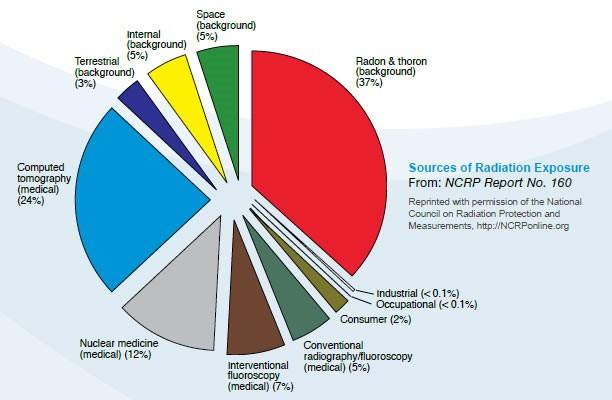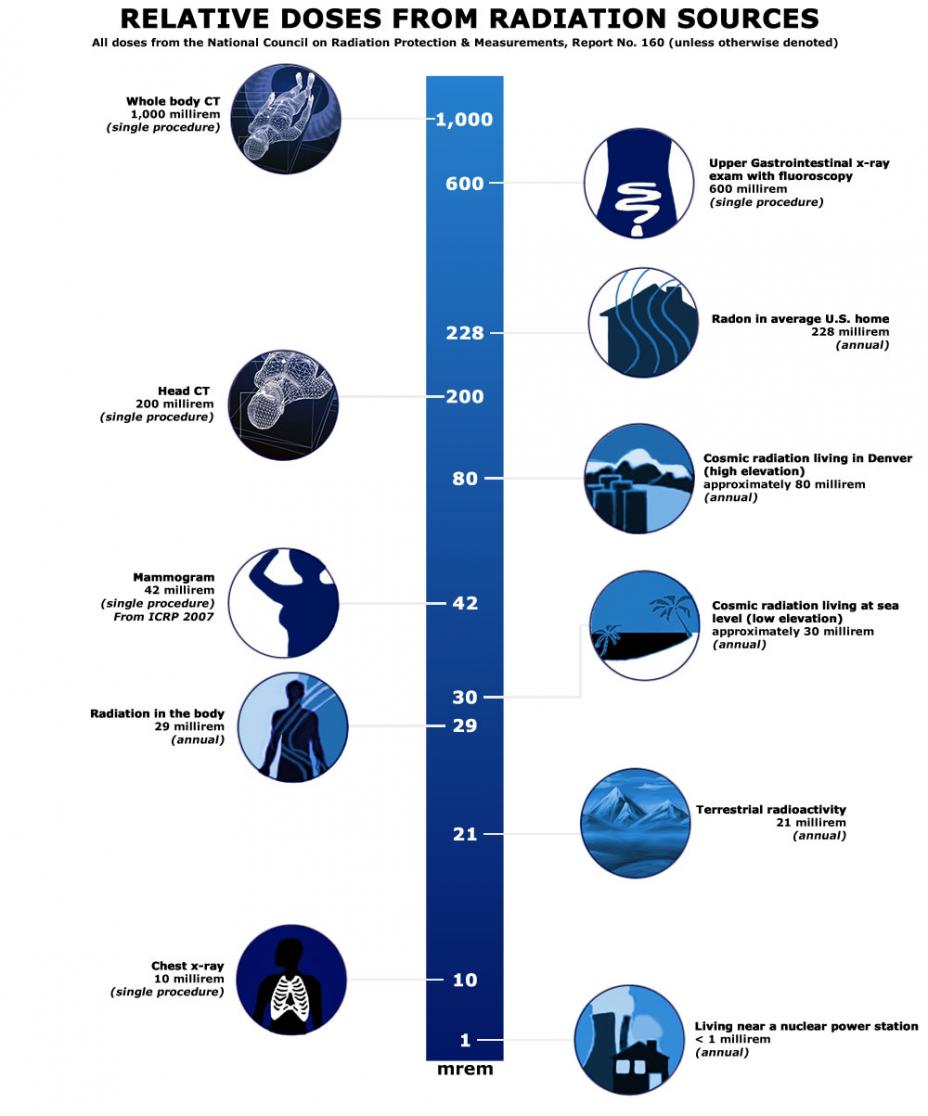Radiation Sources and Doses
Sources of radiation![]() radiationEnergy given off as either particles or rays. are all around us all the time. Some are natural and some are man-made. The amount of radiation absorbed by a person is measured in dose. A dose is the amount of radiation energy absorbed by the body. See Radiation Basics for information about dose.
radiationEnergy given off as either particles or rays. are all around us all the time. Some are natural and some are man-made. The amount of radiation absorbed by a person is measured in dose. A dose is the amount of radiation energy absorbed by the body. See Radiation Basics for information about dose.
All of us are exposed to radiation every day, from natural sources such as minerals in the ground, and man-made sources such as medical x-rays. According to the National Council on Radiation Protection and Measurements (NCRP), the average annual radiation dose per person in the U.S. is 620 millirem![]() milliremThe millirem is the U.S. unit used to measure effective dose. One millirem equals 0.001 rem. The international unit is milliSievert (mSv). (6.2 millisieverts). The pie chart below shows the sources of this average dose.
milliremThe millirem is the U.S. unit used to measure effective dose. One millirem equals 0.001 rem. The international unit is milliSievert (mSv). (6.2 millisieverts). The pie chart below shows the sources of this average dose.
 Figure reprinted with permission of the National Council on Radiation Protection and Measurements. Exit
Figure reprinted with permission of the National Council on Radiation Protection and Measurements. Exit
Most of our average annual dose comes from natural background radiation![]() background radiationRadiation that is always in the environment. The majority of background radiation occurs naturally and a small fraction comes from man-made elements. sources:
background radiationRadiation that is always in the environment. The majority of background radiation occurs naturally and a small fraction comes from man-made elements. sources:
- The radioactive gases radon and thoron, which are created when other naturally occurring elements undergo radioactive decay.
- Space (cosmic radiation).
- Naturally occurring radioactive minerals:
- Internal (in your body).
- Terrestrial (in the ground).
Another 48 percent of the average American’s dose comes from medical procedures. This total does not include the dose from radiation therapy used in the treatment of cancer, which is typically many times larger.
Use the Radiation Dose Calculator to estimate your yearly dose from sources of ionizing radiation.
The following diagram compares radiation doses from common radiation sources, both natural and man-made.

Sources:
National Council on Radiation Protection & Measurements (NCRP), Report No. 160 Exit
International Commission on Radiological Protection, Publication 103 Exit
